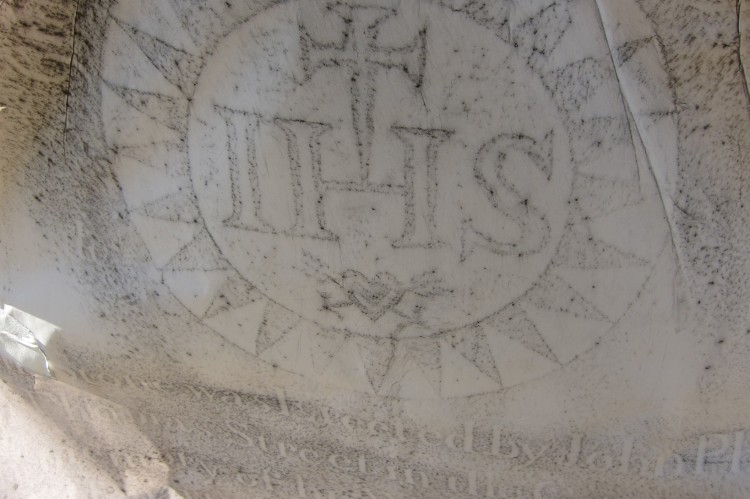 This technique involves using sheets of newsprint, an ordinary kitchen sponge and sheets of carbon paper. Our friend Gerry Mullens taught us this technique and he got it from Dr Elizabeth Shee Twohig, a specialist in prehistoric rock art. The beauty of the technique is that it has minimal impact on the headstone while ensuring a 1:1 copy is made, either of the complete face or of particular details.
This technique involves using sheets of newsprint, an ordinary kitchen sponge and sheets of carbon paper. Our friend Gerry Mullens taught us this technique and he got it from Dr Elizabeth Shee Twohig, a specialist in prehistoric rock art. The beauty of the technique is that it has minimal impact on the headstone while ensuring a 1:1 copy is made, either of the complete face or of particular details.
We find the rubbing technique works well in workshops because it enforces the need for teamwork. It is a skill which improves with practice. Paper rubbings do not necessarily help with recalcitrant inscriptions, instead they are perhaps the best means of recording shallow carving details to scale. As newsprint or butchers paper are not ideal for archiving we tend to record the rubbing with a high-quality digital photograph before removing the sheet from the headstone; the digital image then becomes the main archive element.
The technique works as follows;
- Pick a broadsheet or tabloid roll of newsprint depending on the size of the headstone.
- Measure the length of the roll required and cut as appropriate.
- Afix the sheet to the top of the headstone using masking tape, aiming to have the sheet sit squarely on the face of the memorial.
- We do not generally tighten the paper with tape before we start rubbing.
- Take a dry kitchen sponge, half a sheet of carbon paper (black seems to be better than blue but use whatever you have to hand) and wrap it wrap it around the sponge.
- Remember you must rub the sponge against the newsprint, not the back of the stone (that note is directed at the person in the late Summer workshop who surprised us all by attacking the bare stone with the sponge and carbon paper)
- Start rubbing at the top of the sheet, using your free hand to ensure the newsprint is pressed tightly against the headstone. More masking tape can be added as the rubbing proceeds (teamwork).
- Sometimes the carbon paper slips; always the carbon paper 'runs out'. Keep fresh paper on the sponge and use more pressure for fine detail.
- When finished, tape the paper tight and take a digital photograph. Our normal headstone photographs are set to 5 MP but we sometimes take the rubbing photographs at higher settings of 10 MP. This photograph should be taken as perpendicular to the headstone face as possible and the headstone is to be centred in the image.
 One of our training groups has done a complete set of rubbings for their historic graveyard. We particularly encourage rubbings if a group are keen to investigate the iconography of the headstone carvings.
One of our training groups has done a complete set of rubbings for their historic graveyard. We particularly encourage rubbings if a group are keen to investigate the iconography of the headstone carvings.
I suspect we will publish a video of a rubbing being done in the near future. It is also worth mentioning that rubbings are very therapeutic for an adult - it is like being back in an art class at school but with detective work also involved.



